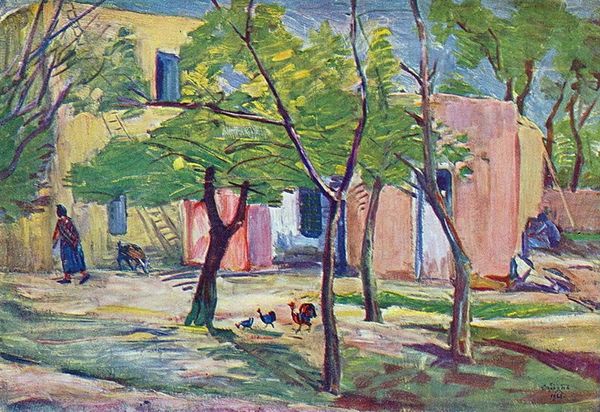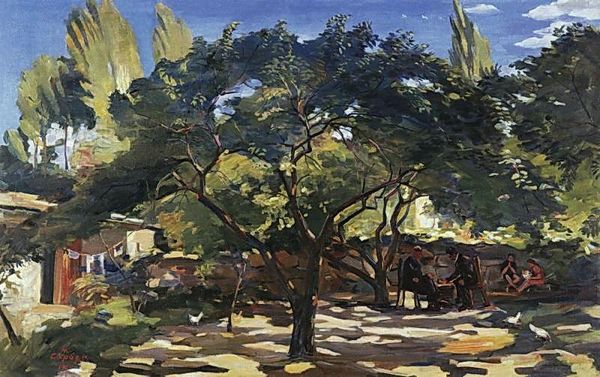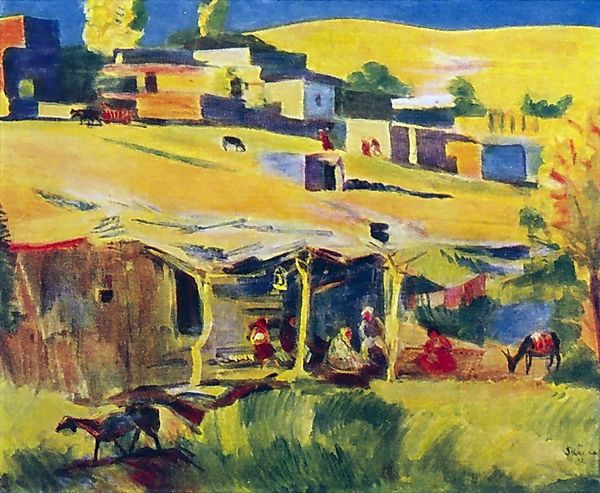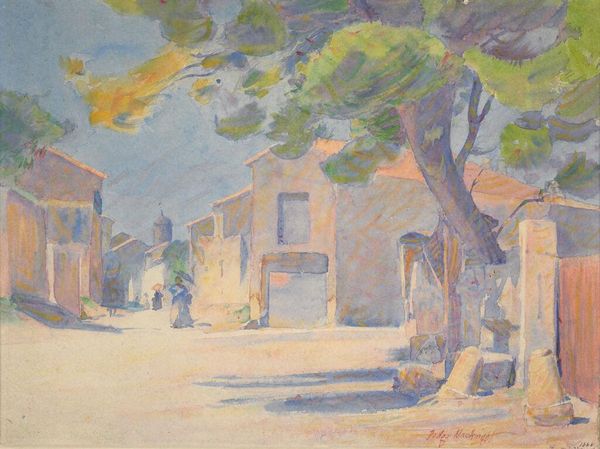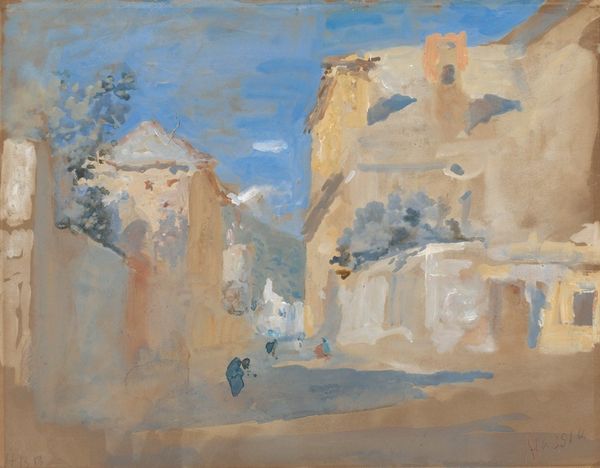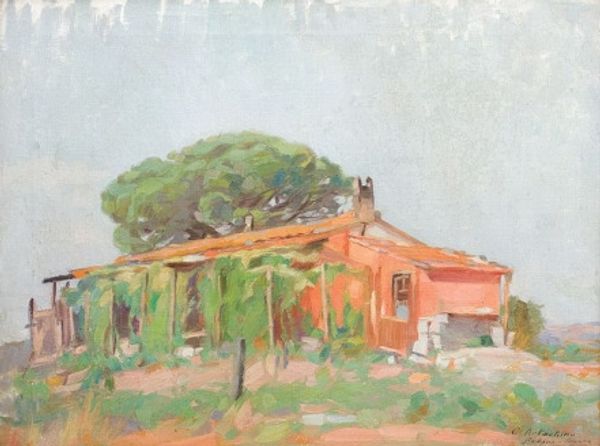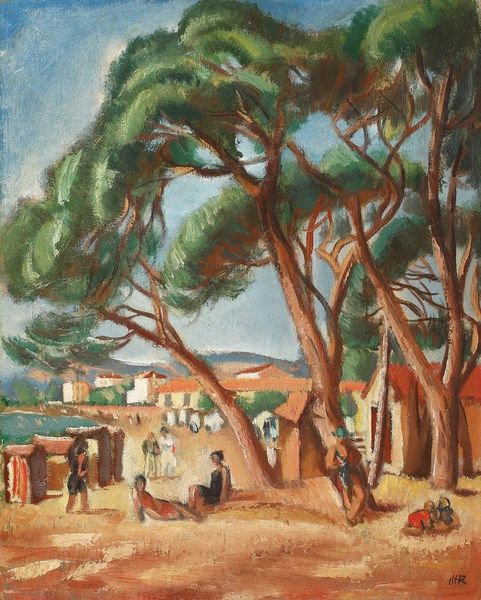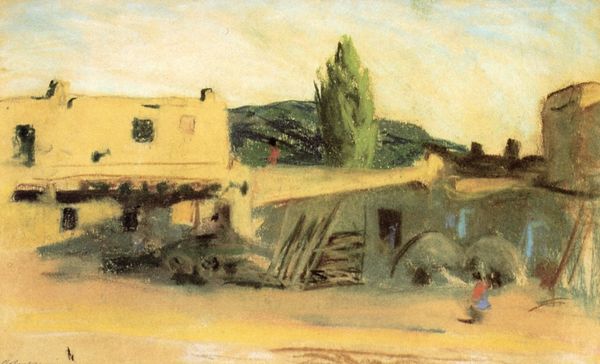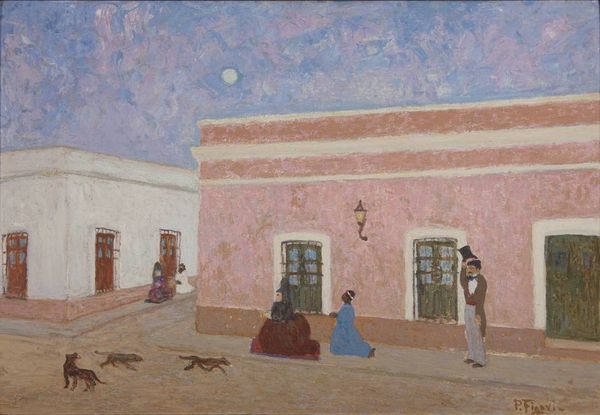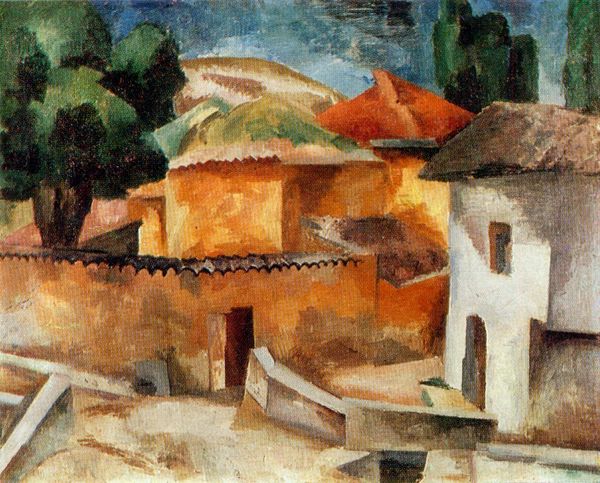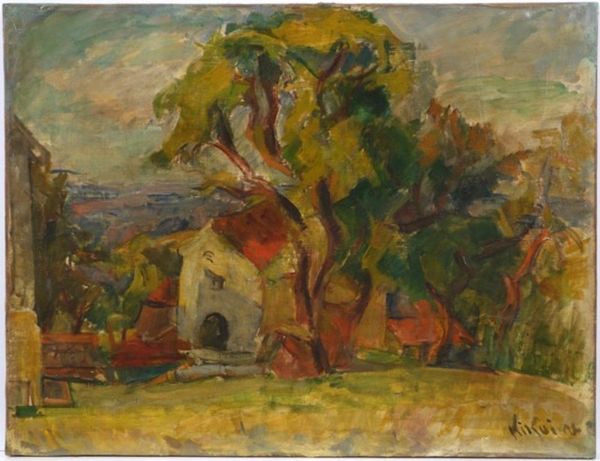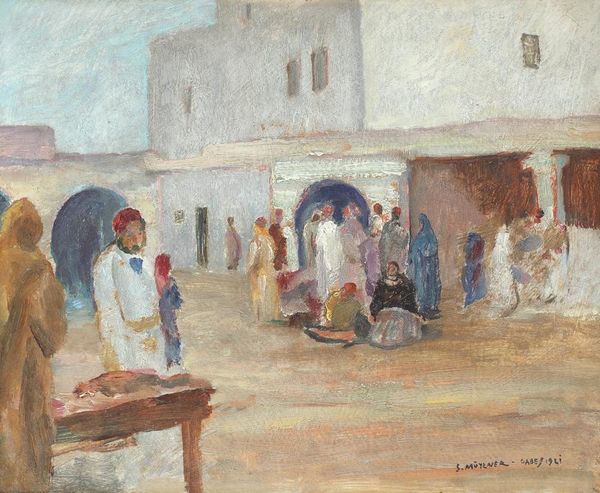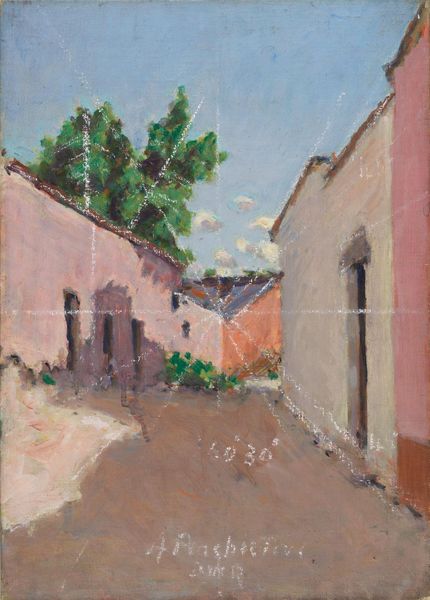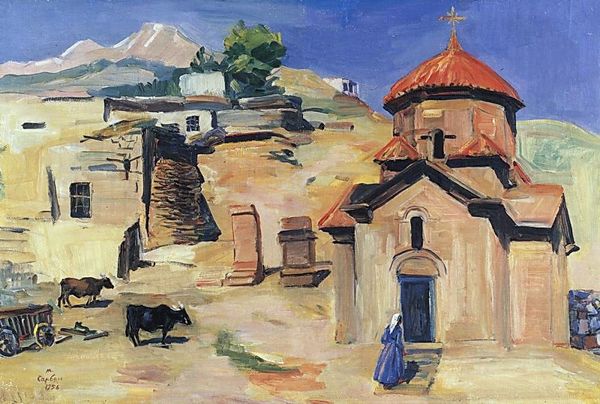
painting, oil-paint
#
rural-area
#
painting
#
oil-paint
#
landscape
#
house
#
soviet-nonconformist-art
#
impressionist landscape
#
socialist-realism
#
oil painting
#
cityscape
Copyright: Martiros Sarian,Fair Use
Curator: What strikes you first about this work? The overall tonality makes me think of warmth and history. Editor: The painting has an unpolished aesthetic that really calls to mind the passage of time and human existence. What’s its background? Curator: This is "Village Ashnak," an oil painting crafted in 1957 by Martiros Sarian. Editor: It does capture village life—almost frozen. What are those figures suggesting in their body language? There's an aura that hints at their narratives within their daily lives, something communal yet unreadable. Curator: That’s an interesting read, especially because Sarian lived and worked under complex socio-political expectations, including the style that became known as "Socialist Realism". But his paintings remain vivid and evocative while avoiding rigid ideological programs. Look at that lone donkey or those huddled figures. Do they resist or align with expected symbols of Soviet-era art? Editor: Interesting you point out how the artwork defies "Soviet Realism" expectations, which favored idealized scenarios of communal advancement. Curator: Instead, Sarian's work offers an interpretation that seems subtly subjective. His symbolic language is more internalized, dealing with emotional impressions as much as material realities. Editor: You're right to push back. There's an autonomy, maybe even slight resistance here, in his aesthetic that goes past strict programmatic interpretations. And the setting? Ashnak might mean more than we gather at first view. Curator: Considering Armenian history, place names bear stories—hidden cultural memory. Editor: In this visual and societal conversation, “Village Ashnak” encapsulates Sarian's ability to portray more than meets the eye. Curator: Perhaps we find a visual echo of how collective experiences filter into individual stories, retaining local memory as they unfold over time. Editor: It urges us to contemplate beyond what's presented on its exterior. That tension, that continuous story... it truly epitomizes Armenian creativity, especially amid the era.
Comments
No comments
Be the first to comment and join the conversation on the ultimate creative platform.
